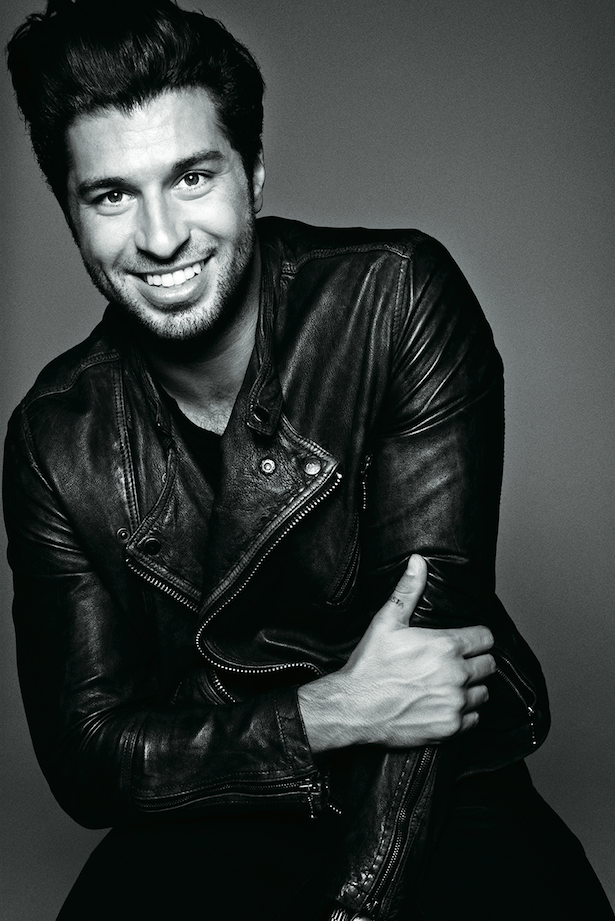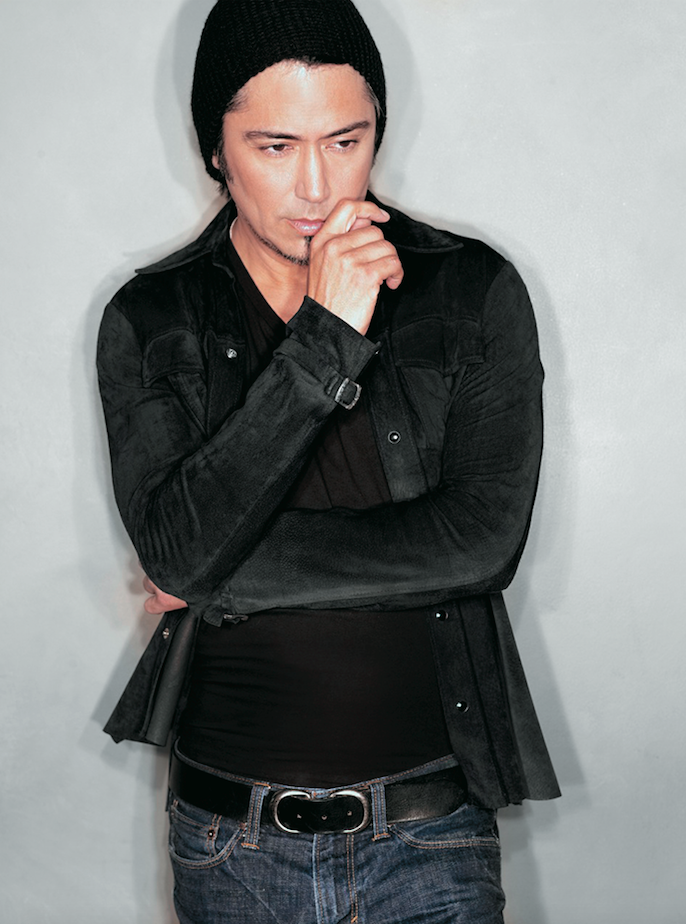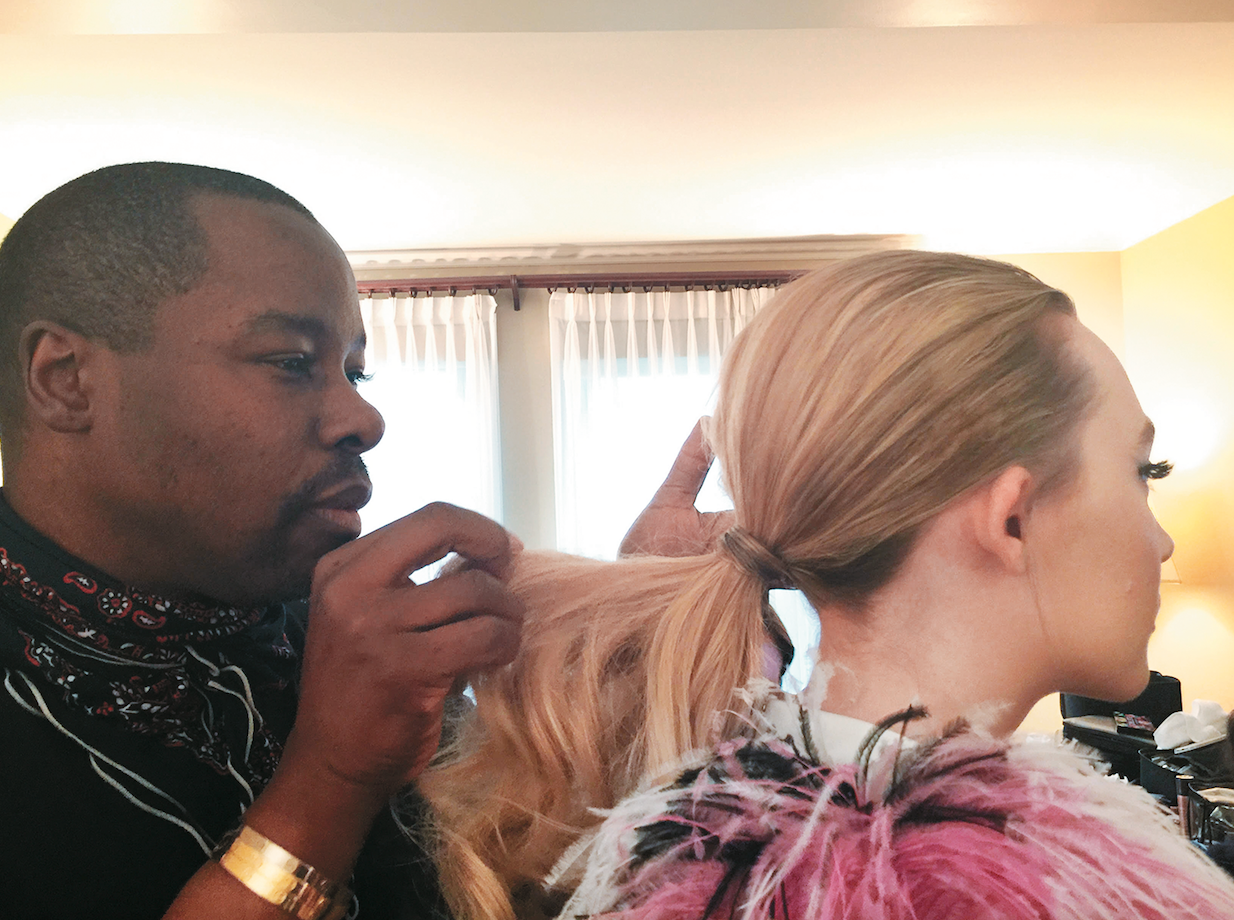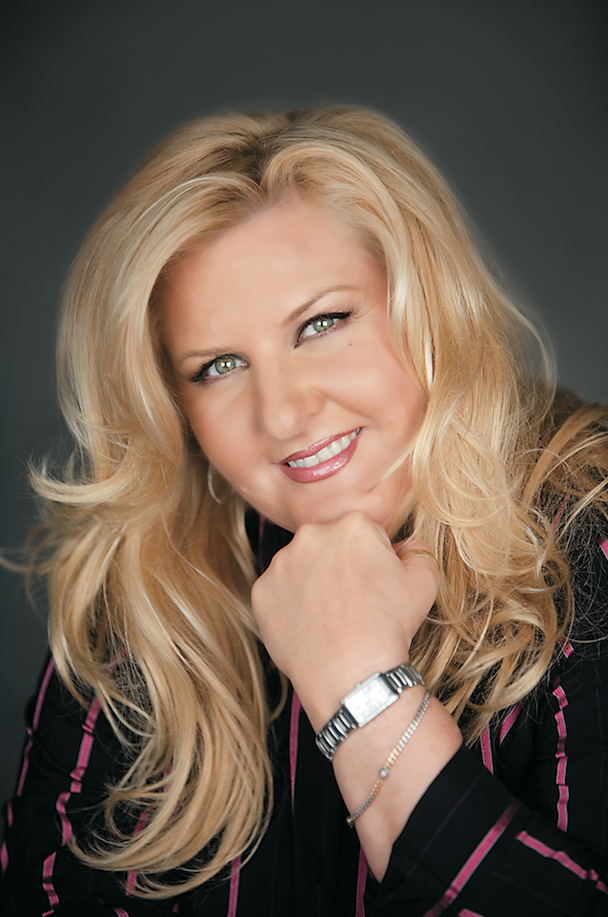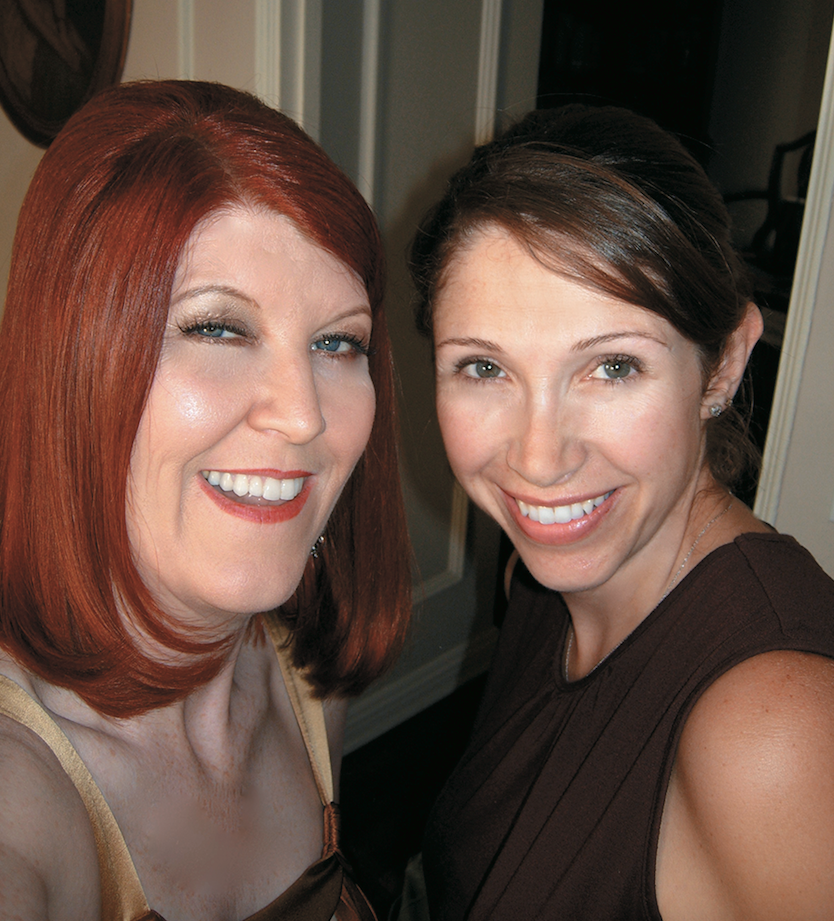We are a nation obsessed with celebrity, and we wonder what it’s like to be on the inside—to get an actress red-carpet ready, to get an actor into character, to become friends with a superstar like Madonna. So we asked a handful of celebrity hairdressers to open up. These are their stories.
On the Road
Andy LeCompte, Wella Professionals Celebrity Ambassador, owns an eponymous salon in West Hollywood that caters to some of the biggest celebrities in Tinseltown, from Penelope Cruz to Katie Holmes. Perhaps the biggest star in his firmament is Madonna. They’ve been friends and collaborators for 13 years. “Rebecca Romijn introduced us,” says LeCompte, who went on the road with the superstar for her Rebel Heart Tour. “We really get each other and communicate really well. I can usually anticipate her needs and desires, which makes things so much easier. We’re just really good friends who enjoy each other’s company.” Naturally, being on the road with someone like Madonna for months on end has its ups and downs. “The schedule is very demanding, and timing can change at any minute,” says LeCompte. “I’m often styling her hair in cramped spaces or doing touch-ups with little or no prep time. There are always cancelled flights and added shows that require me to think on my feet.” Still, despite the lack of sleep and crazy hours, LeCompte wouldn’t change a thing. “Madonna has inspired me to believe in myself, and her performances are amazing.” Okay, we had to ask: What’s she like? “She’s fearless,” says LeCompte. “Her message has helped me follow my dreams, and I’m so thankful for that.”
Purple Reign
Estilo Salon has been a magnet for celebrities since it opened in West Hollywood, CA, in 1991. Jen Atkins, who worked there as a receptionist, has joked that she spent years feeding quarters into Bette Midler’s meter. Co-Owner Philip Carreon remembers how he met Prince in 1985 right after Around the World in a Day, his second number-one album, was released. “Prince wanted the girls in The Revolution [Wendy Melvoin and Lisa Coleman] to look completely different than they did in Purple Rain,” says Carreon, who cut their hair off. “Prince wanted Wendy to look like Clara Bow.” Carreon was summoned to Minneapolis in 1989 when Prince was filming the music video to accompany the soundtrack for Batman, which he wrote. “The makeup artist was having trouble with the hair and told Prince he needed to get the guy who had done Wendy and Lisa’s hair,” he says. “That was me.” Carreon was wearing his hair longer at the time, and the first thing Prince said when they met was, “I want hair like yours.” Carreon calls that the beginning of the “blowout period” where Prince was having his hair blown out three times a week. “I did his hair so much that I think it paid for my portion of Estilo,” says Carreon, who describes Prince as incredibly loyal. “He recognized creativity, he was old school in that way, people who appreciate others for their craft and what they do.” In the music video, Prince appears as both himself and a character called Gemini—his astrological sign. One side of his face was supposed to represent the Joker (evil) and the other Batman (good). “Watch the video and you’ll see his hair is half green and half black,” says Carreon. “I look at it now and think, how did I get that on a celebrity? I can’t believe I did it.” In another scene from the video, Prince appears as the madman behind the curtain. “At that point he was supposed to look like himself, but he was on a riser,” says Carreon. “Because he was so small, he was always trying to look taller—shoes, shoulder pads, the height of his hair.” In 1991, Carreon changed Prince’s look yet again for Diamonds and Pearls, his thirteenth studio album and the first one featuring his backing band, The New Power Generation. “That look was a work in progress—all the big curls on the top and the gelled sides,” remembers Carreon, who was becoming so busy at his salon that he referred Prince to a hairdresser he knew who lived in Minneapolis. “I showed her how to do the look so she could style his hair when I couldn’t be there,” he says. “She was doing his hair all the time, but I’d get a call from him asking if I could come to Minneapolis to do this video. So, I’d fly in and his hair would be done, and I’d ask what was going on, and he’d say, ‘I just wanted you to look at it and make sure it’s okay.’ Maybe I’d fix a piece of hair that was sticking out when he was in front of the camera, or I’d tweak the balance. I learned a lot working on all those videos with him. It really honed my eye.” For the past few years Carreon has been working with Miguel, a young R&B artist who sang “She’s Out of My Life” in tribute to Michael Jackson at the 2016 Grammy Awards. “He gets compared to Prince a lot,” says Carreon, who moved him out of his signature fade into a pompadour not long ago. “Now we’re getting ready for another big change—a mix of a lot of different textures, like a curled dreadlock.”
Character Building
Cherry Petenbrink (@hairbycherryp) is an International Guest Artist with Joico, but she’s also on a first-name basis with Jennifer Lawrence. “I did her hair for the Hunger Games months before we went to North Carolina,” says Petenbrink, whose job was to keep Lawrence’s particular shade of brunette consistent throughout filming. She also turned Josh Hutcherson into a blonde—he played Peeta Mellark—and colored every single wig. Let that sink in for a moment. Of course, when you’re part of a franchise like the Hunger Games, doors begin opening for you, and that’s exactly what happened to Petenbrink, who did what she calls a “radical make-under” on Emma Thompson for Saving Mr. Banks—Thompson played P.L. Travers, the author of Mary Poppins. “She wanted to use her own hair, not a wig, so I colored it a mousy shade of brown and permed it,” says Petenbrink, who allows that Thompson’s husband was “not turned on by that look.” Even Thompson admitted that she didn’t expect that there would be “a lot of shagging” during the five months of filming. Not to worry. When the movie wrapped, Thompson was back in Petenbrink’s chair where she happily became a blonde again. Scarlett Johansson is another A-lister who relies on Petenbrink to get her into character. “I worked with her on all three Captain America movies and made her a brunette for Chef,” says Petenbrink, who says that a lot of stars prefer to wear wigs in their movies to avoid the wear and tear on their hair. “Nicole Kidman always wears wigs in her films. I’ve colored a lot of them. So does Jennifer Aniston. Wearing a wig also cuts down on the amount of time they have to spend in the chair on set.” According to Petenbrink, the bigger the star, the more money production is willing to spend on a wig, which can cost around $8,000. “There’s always a hero wig, which will be used in the close-ups, what we call the money shots,” says Petenbrink, who admits that it can be more stressful coloring an $8,000 wig than doing a celebrity’s own hair because there’s no margin for error. “You can’t add a glaze or whatever. You have to nail it. I always say that I have to deliver on a promise.” The upside? “When I see the billboards on Sunset with Scarlett or Nicole, I go, wow, I did that.”
In Session
Ted Gibson co-owns a namesake salon in New York City with his partner Jason Backe, but he’s also a session stylist who might do the cover of Vogue one month and get award-winning actress Saoirse Ronan red-carpet ready for The Met Ball the next. What he wants you to remember is that editorial work does not pay the rent; it’s merely a stepping stone to more lucrative work on high-end advertising campaigns. “These people look at magazines to decide who they want to use for their campaigns,” he says. We wanted to know what it’s like getting an actress like Ronan ready for a high-profile event like The Met Ball. “It’s so much fun. She booked me two months in advance, and we decided to create this ‘60s bombshell with eyeliner and big hair,” he says. “I bought a fall and put it in. Then I curled the entire head, backcombing the hair to give it height and movement.” There was only one glitch: When Ronan saw the big Barbarella hair Gibson had envisioned, she hated it. Just as there’s no crying in baseball, there’s no crying in session work. “She just didn’t feel comfortable so I pulled all her hair back into a ponytail at the nape of the neck,” says Gibson who has a theory about ponytails. “When they’re lower, they’re chic and sophisticated. When they’re higher, they’re more rah-rah cheerleader.” Still, after seeing the ponytail, Gibson decided that a bun would be better since there were so many feathers on Ronan’s dress. And that’s where his years of editorial work came in handy. “When you have that kind of experience,” Gibson says, “you can turn on a dime.” Ultimately, Ronan left her hotel to face a phalanx of photographers, and she did it with a smile on her face.
The Fixer
Sheila Stotts may not be a household name, but she’s the person everyone calls when they need someone to correct a hair horror story. Back in the day, producers Ron Howard and Brian Grazer had her on speed dial. “They knew that I could fix anything,” says Stotts, who works by instinct. “If I had too much time to think about it, I’d come up with seven different looks.” One of her favorite people is editorial stylist Peter Savic. “He would be working on some video or advertising campaign, and I’d get a call,” she says. “He used to say, ‘Nightmare, Sheila,’ and I’d have to drop everything.” Stotts is a master of extensions. “I’m known for my couture work,” she says. “A lot of celebrities go from project to project and their hair gets beat-up. When you see them on the cover of a magazine, you can be certain that they’ve put something in their hair to make it look better.” Her longtime clients include Christina Aguilera, Wayne Newton, Rob and Cheryl Lowe, Pierce Brosnan and Jennifer Aniston—“Most people don’t even know that she has extensions,” says Stotts. Recently she worked with Julia Roberts so she could be a little blonder and her hair could look a little thicker. Stotts has also worked with Celine Dion for over a decade. “I fly to Vegas every two or three weeks or go wherever in the world she happens to be,” says Stotts, who considers Dion a close friend. “Celine has started taking a walk down memory lane, looking at all the things that have been posted about her. She’ll say, ‘Look, Sheila, I had two inches of hair then and you did this.’” On Mother’s Day, Stotts received texts from Lauren Hutton and Virginia Madsen, both clients she also considers friends. Her advice for working with celebrities of that caliber: “Treat them with love and graciousness, don’t talk politics or religion and don’t curse in front of them.” Stotts worries about the sustainability of a career built entirely on self-promotion. “There are so many young stylists out there posting photos on Instagram, jumping on trends like crazy color or braids. It’s like they’re trying to ride that wave,” she says. “But what if they spent a couple of hours offline instead, looking for inspiration at a museum or attending a seminar? Social media can be inspiring to some extent. I see the relevance, but I can also see the danger.” Hairdressers are always leaving messages on her website asking how they can work with celebrities. “I tell them, call me in 15 years. Pay your dues. I worked in a salon for years and acquired knowledge and experience. I could walk my talk. I leveled with people about what could be done and what could not be done, and they learned to trust me.” In other words, do the work. There are no shortcuts.
TV Land
When Kim M. Ferry (@hairferry) was managing a Fantastic Sams outside of Chicago nearly 30 years ago, she probably never imagined that one day she’d be Department Head of Hair on ABC’s Pretty Little Liars, but that’s exactly what happened. Ferry is nothing if not persistent, and gutsy. When she saw a film crew shooting at a mall in her hometown, she approached the Production Assistant and asked him if the hair and makeup people were there yet. “I told him that I was with them, and he let me through,” she says. On set were makeup artists Samantha Mayer, who’d worked on Curly Sue, and Ve Neill, who did the makeup for Michael Keaton in Beetlejuice and was also Johnny Depp’s personal makeup artist. “I asked Sam if she could tell me how she got to where she was,” says Ferry. Mayer was happy to share. “She was from Chicago like I was, but she told me to move to LA and call her when I got there. She was very kind.” She also made Ferry promise that if she ever made it that she’d show the same courtesy to someone else who asked for help. It’s a promise Ferry has been happy to keep. Ferry moved to LA in 1992 and got her big break on Babylon 5. “I worked 16-hour days for $100 a week,” she says. “You pay your dues.” Two years later the show went union, and Ferry got in. That enabled her to work on other union shows, like The X-Files and The Office where she was Department Head of Hair for nine years. When Ferry was brought in, one of her first decisions was to give Steve Carell’s character, Michael Scott, a makeover. “With his hair slicked back, he looked kind of creepy, like Gordon Gekko,” Ferry says. “I wanted people to like him.” Because the cast was supposed to look like they’d spent an actual day at the office, Ferry wasn’t allowed to do touchups on set. Looking back on her career, Ferry is quick to point out that the years she spent at Fantastic Sams were a training ground for the work she does today. “I learned how to be fast because of the turnover, and I learned how to work with a diverse clientele, everyone from kids to elderly people. What’s different about working on Pretty Little Liars is that there’s a huge emphasis on social media.” Ferry was not only encouraged to start posting photos of her work on Instagram, but also to get her own YouTube channel up and running. We can’t wait to see what tricks she has up her sleeve.
